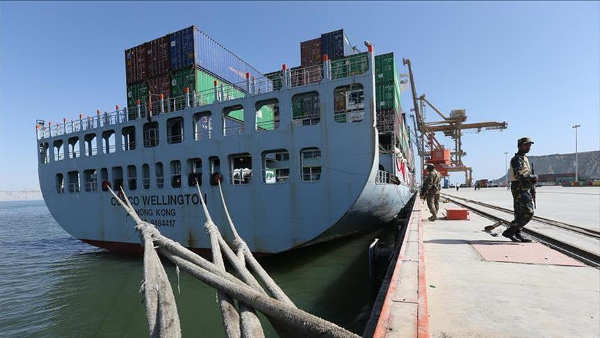The US Department of State has informed India it will not be seeking to extend sanctions on the Chabahar port project, in which India has heavily invested — both financially and diplomatically.
Apart from increasing India’s trade with nations in the Persian Gulf, the Chabahar port is also the starting point of the international north-south transport corridor (INSTC), and the US wants to see trade benefits reach Afghanistan and central Asia via the route, a senior foreign affairs ministry official said on Wednesday.
“Both sides had discussed the Chabahar issue comprehensively in September last year, when the 2+2 dialogues were held in the presence of US Secretary of State Mike Pompeo and US Defence Secretary Jim Mattis. Now, Washington DC has reiterated its position of not putting investments made by India into the development of the Chabahar port into the sanctions list,” he added.
In December 2018, Iran had handed over a part of the operations at Shahid Beheshti port, Chabahar, to India. The port is the gateway to Afghanistan and central Asia.
Route to Russia
The INSTC has remained at the centre of India’s plan for central Asia, crafted by geopolitical pundits at the external affairs ministry, hoping to reach into Afghanistan, and commerce ministry officials looking to boost exports to Russia, Iran, and other nations.
The plan incorporates thousands of kilometres of all-weather highways across central Asian deserts to transport goods to Azerbaijan. Here, logistics hubs have been set up for transporting goods to the Russian port of Astrakhan and onwards to Russia’s European markets. Other nodes would transport shipments to Turkmenistan and its neighbouring countries.
The Federation of Freight Forwarders’ Associations in India, which had conducted the first dry run through Azerbaijan in 2014, had initially pegged six months as the time required to popularise the new route after it opened. But difficulties over the lack of loan facilities from banks on this route, inadequate insurance coverage for bill of lading, non-vessel operating common carrier as well as irregular shipping services to Iran remain.
Talks on the new route started in 2000 and the initial agreement was signed in 2003. A successful dry run was conducted through Iran, Azerbaijan, and Russia in 2014.
Issues remain
“A lot of problems persist, with the banks negotiating the documents of transit goods passing through Bandar Abbas. Exporters are ready to provide a combined bill of lading showing the final destination to prove that goods are only in transit. But banks remain jittery, now that the US sanctions have again begun,” Director-General of Federation of Indian Export Organisations, Ajay Sahai, said.
India’s current trade with Iran takes place mostly through the choked Bandar Abbas port. It handles about 85 per cent of that country’s seaborne traffic. Operations at the deep-sea port, having the capability of handling high-tonnage vessels, are behind schedule and drag down the INSTC.
The corridor is also crucial for India’s plan of securing a route to war-torn Afghanistan that does not have to cross neighbouring Pakistan.
Back in February, India also acceded to the Ashgabat Agreement, allowing New Delhi to take advantage of rail connectivity in central Asia and utilise the Iran-Turkmenistan-Kazakhstan railway line.
Source:BS
Image Courtesy:IndiaTVNews
You may also like
-
IAF Aircraft Set Course For Exercise Eastern Bridge VII At Oman
-
Trade Connect E-platform For Exports Is Single Window, Fast, Accessible And Transformational: Shri Piyush Goyal
-
India-us Working Together In Areas Like Critical Minerals, Supply Chains And Advanced Technologies: Shri Piyush Goyal
-
Dot Simplifies Approval Processes For Telecom Licenses And Wireless Equipment
-
Coal Production and Supply Trends on Positive Trajectory
